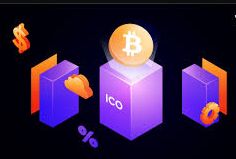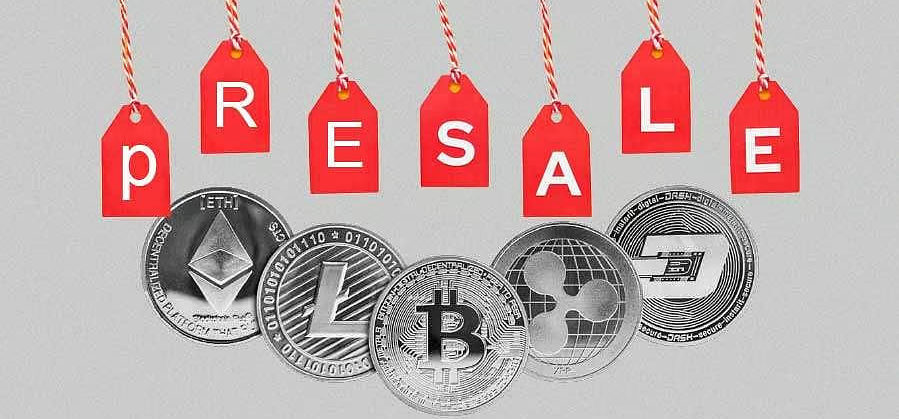Delete Binance Account
How to Delete Your Binance Account: Step-by-Step with Security Tips

In my years of working with crypto users, I’ve encountered many who chose to delete their Binance account — each for their own valid reasons. Some do it for security — they’ve experienced phishing attempts, suspicious login activity, or simply want to minimize exposure. Others do it because they are leaving crypto altogether, having cashed out or shifted their interest to traditional finance. Then there are those who move to decentralized exchanges, preferring self-custody and greater privacy.
- Why Users Choose to Delete Their Binance Account
- Key Considerations Before Deleting Your Account
- Deactivation vs Deletion: What’s the Difference?
- How to Prepare Your Account for Deletion
- How to Delete Your Account Using the Binance Website
- How to Delete Your Account Using the Binance Mobile App
- What Happens After You Delete Your Binance Account
- Security Measures Before and After Deletion
- How Long Does It Take to Delete a Binance Account?
- Can You Reactivate a Deleted Binance Account?
- What Happens to Your KYC and Personal Data?
- How to Export Your Data Before Deleting the Account
- Deleting Binance Sub-Accounts and Linked Products
- How to Contact Binance Support for Deletion Help
- Summary Table: Deactivation vs. Deletion
- Final Thoughts Before You Delete Your Binance Account
- FAQ

Why Users Choose to Delete Their Binance Account
One of the most common reasons, though, is regulatory pressure or limited features in certain regions. Binance periodically adjusts its operations based on compliance requirements, and users from affected countries often find their access restricted. Rather than leave a dormant account open, many opt to close it entirely.
Whatever the reason, deleting your account is a serious decision — not just technically, but also financially and legally. This guide will walk you through all stages of that process, and help you ensure that you’re doing it for the right reasons and in the safest way possible.
Key Considerations Before Deleting Your Account
Account deletion is not a button you press on impulse. I always advise users to slow down and consider several important steps before moving forward. For one, you must ensure that your account is fully settled — meaning no open trades, no outstanding balances, and no active features like staking, savings, or liquidity farming.
If you’re using Binance for tax reporting, I highly recommend downloading your full transaction and funding history. I’ve seen people delete their account and realize later that they no longer have records of when or how much crypto they bought, sold, or transferred — and that can cause serious tax complications.
Also, understand the legal and operational implications. Once your account is deleted, you lose access to customer support history, internal chat messages, referral bonuses, KYC data stored in your profile, and any sub-accounts you’ve created. If you’ve linked any external apps through Binance’s API, you should revoke all access before deletion to avoid future security risks.
Taking the time to prepare now can save you major headaches later. Deleting an account is easy. Fixing the mistakes from a rushed deletion is often impossible.
Deactivation vs Deletion: What’s the Difference?
This is a distinction many users overlook, but it’s essential to understand. Deactivation is a reversible action — think of it as putting your Binance account into sleep mode. You’re disabling logins, halting all activity, but not erasing the account from the system. You can later contact support, prove your identity, and reactivate your account.
Deletion, by contrast, is final and irreversible. Once initiated and confirmed, your account is permanently closed. All access is terminated. Binance may retain some data for compliance and regulatory reasons (as per global AML laws), but you won’t be able to log in, restore funds, or re-use your original email.
I usually recommend that users who are simply taking a break — or considering coming back later — opt for deactivation instead. It’s the safer option if you’re even 1% unsure. But if your goal is total separation from the platform, deletion is appropriate.

How to Prepare Your Account for Deletion
Before Binance will allow you to delete your account, you must prepare it properly, and that means going through several steps. First, log in and check your Spot, Funding, and Margin wallets. Your balances must be zero. Even the smallest dust (leftover assets worth pennies) can block the deletion process. Use Binance’s “Convert Small Balances to BNB” feature to clean those up.
Next, cancel all open orders. This includes Spot trades, Margin trades, Futures contracts, and P2P ads. Binance will not let you delete your account while you have pending activity. If you’re using auto-invest, savings, or staking, you’ll need to redeem your assets and wait for any locked periods to finish.
You should also export your full transaction history. Binance allows CSV downloads from the “Transaction History” page. This is especially important if you’re subject to crypto taxation in your country — you may need to prove purchases or trades in the future.
Lastly, disconnect all linked devices, API keys, and third-party apps. I once worked with a user who deleted their account but forgot about a bot that still had API access. Although the keys became invalid after deletion, it’s always best to manually shut down integrations in advance.
How to Delete Your Account Using the Binance Website
Once you’re fully prepared, you can proceed with the deletion. If you’re using the desktop version of Binance, start by logging into your account. Click on your profile icon in the top right corner, and go to Security.
Scroll down to the section labeled “Account Activity” or “Manage Account,” where you’ll see an option called “Delete Account.” When you click this, Binance will ask for the reason you’re leaving — such as security concerns, moving to another platform, or exiting crypto. Select the most relevant option and continue.
You’ll now be presented with a final warning screen. Binance explains that deletion is irreversible and that your data will no longer be accessible. You’ll need to accept these conditions by ticking a checkbox or typing a confirmation phrase.
To finalize the process, you’ll go through Binance’s security verifications: inputting your 2FA code, email confirmation, and possibly completing facial recognition. Once verified, your deletion request will be submitted.
In most cases, deletion is processed within minutes. You’ll get a confirmation email once the account is closed.
How to Delete Your Account Using the Binance Mobile App
If you primarily use Binance on mobile, the deletion process is equally straightforward. Open the Binance app, log in, and tap on the profile icon in the top-left corner. Scroll down and tap on Security.
From there, find and tap on “Delete Account” or “Close Account” depending on your app version. Binance will prompt you to select a reason, as with the web version, and ask you to confirm that you’ve withdrawn all funds and canceled open positions.
You’ll also need to pass security checks — 2FA code, password entry, and in some cases facial ID verification if enabled. Once you submit the request, Binance will process the deletion and notify you via email.
I tested this method personally and found that mobile account deletion is just as reliable as desktop. However, I recommend updating your app to the latest version before starting — older versions might not show this feature or may behave inconsistently.

What Happens After You Delete Your Binance Account
Once the deletion is finalized, your account will be permanently closed. This means you can no longer log in, trade, or access your wallet. Binance removes your active profile and disconnects all linked services — including Binance Card, Pay, NFT, Earn, and any sub-accounts.
However, some data is retained securely for regulatory purposes. This includes your KYC information, transaction logs, and withdrawal records — which Binance is obligated to keep for up to 5–10 years depending on your jurisdiction.
All API keys become invalid, and you will not be able to register a new account using the same email address. Binance may also prevent you from registering again with the same ID if the system recognizes a match.
From my professional experience, after deletion, you should monitor your email and SMS inboxes in case of unusual activity or attempted reactivations. While your account is closed, it’s still wise to stay alert for phishing or fraud attempts.
Security Measures Before and After Deletion
Deleting your Binance account should never be done hastily, especially when personal data and financial history are involved. I always advise users to enhance their security before initiating the process and take post-deletion precautions to ensure full digital safety.
Before deletion, enable all available security tools — even if you’re about to close your account. Make sure Two-Factor Authentication (2FA) is turned on, verify that your recovery email is accessible, and check recent login history for unauthorized sessions. If any suspicious activity is detected, change your password immediately and delay deletion until you’re certain your account is secure.
Use a private internet connection. Never delete your account while connected to public Wi-Fi or unsecured networks. During deletion, your credentials and sensitive confirmations pass through various verification stages, and you want zero exposure.
After deletion, you should consider revoking third-party API access (such as from trading bots or portfolio trackers) if you’ve used any. Even though your account is closed, cleaning up access credentials ensures there are no lingering vulnerabilities on other services tied to your Binance data.
Finally, monitor your email inbox and phone for any notifications about attempted reactivation or fraud. If someone attempts to impersonate you or reactivate the account using your credentials, you’ll want to act fast and notify Binance Support.
How Long Does It Take to Delete a Binance Account?
In most cases, the deletion process on Binance is almost immediate after completing all verifications. When I guide users through the process, the account is usually closed within 5–10 minutes, and an automated confirmation email is sent.
However, there are a few exceptions. If your account has been flagged for compliance reasons — such as high-volume transfers, regulatory reviews, or linked suspicious activity — the deletion may be manually reviewed by Binance’s security team. This could take anywhere from a few hours to several days, depending on your case.
Additionally, if you have pending KYC updates, unresolved customer support tickets, or recent large withdrawals, Binance may place a temporary hold to ensure all transactions are finalized.
I always recommend that users complete deletion during working hours on weekdays, as support is typically more responsive. If it’s urgent and you suspect manual review is slowing the process, you can contact support with your ticket ID and request status clarification.
Can You Reactivate a Deleted Binance Account?
The short answer is no. Once a Binance account is deleted, it cannot be reactivated, even if you contact support later. I’ve seen this firsthand with users who changed their minds a week after deletion and tried to plead for access — but the platform maintains a strict irreversible deletion policy.
Technically, Binance deletes your login access and user profile, but retains certain information (KYC, logs, transaction records) for compliance. This does not mean your account can be restored. It’s only for legal obligations like audits and anti-money laundering enforcement.
If you want to return to Binance in the future, you must create a brand-new account using a different email address. However, if your personal identity (passport, ID) is already associated with a previous account, Binance may block registration or require additional steps.
That’s why I always say: if you’re unsure about deleting, choose deactivation instead. It’s reversible, doesn’t impact your KYC status, and gives you time to reconsider.
What Happens to Your KYC and Personal Data?
This is one of the most common concerns, and understandably so. Binance stores sensitive information: full name, government-issued IDs, facial scans, and even financial behavior patterns. So what happens to that data after deletion?
While Binance removes your active account, it retains KYC-related data for a legally mandated period, usually ranging from 5 to 10 years depending on the jurisdiction. This retention is not optional — all licensed exchanges must follow regulatory obligations for fraud prevention, tax reporting, and auditing.
In practice, your data is encrypted, archived, and moved out of active systems. It’s no longer used for marketing, trading activity, or user engagement. Only the internal compliance team or legal representatives can access it — and only if required by authorities.
From my professional experience, Binance’s data governance is rigorous. I’ve worked with clients in regulated markets who were audited, and Binance was able to produce records securely and legally — but never for commercial purposes after deletion.
How to Export Your Data Before Deleting the Account
Before deleting your account, one of the most important things you can do is export your trading and transaction history. This is critical for tax filings, portfolio analysis, and proving source of funds — especially if you ever plan to interact with traditional banks or regulators.
Go to Wallet > Transaction History, and from there, you’ll find filters by type (deposit, withdrawal, trade, conversion), date range, and currency. Binance allows you to download the results as a CSV file. You should also check the “Tax Center” if available in your region, which offers a summary of realized gains/losses and fiat value calculations.
In my routine, I tell clients to export three core datasets:
- All trades (spot, futures, margin)
- All deposits and withdrawals
- A final balance screenshot
Once your account is deleted, these records are no longer accessible — and Binance support won’t recover them for you. Store them in encrypted local storage or secure cloud backups. I use offline storage in combination with password protection.
Deleting Binance Sub-Accounts and Linked Products
If you’re a business user or a Binance Pro trader, chances are you’ve created sub-accounts or linked services like Binance Earn, NFT, Card, or Pay. Deleting the master account will automatically deactivate all these services — but it’s still good practice to clean them manually.
Start by visiting your Sub-Account dashboard (available under “User Center” > “Sub Account Management”) and manually close or transfer assets. Binance will not allow account deletion if sub-accounts hold funds.
If you’re using services like Binance Pay, Gift Cards, or BNB Vault, redeem or withdraw all funds before deletion. I once worked with a user who had over $800 in BNB locked in staking and didn’t realize it until the deletion process was blocked. A quick redemption solved it — but had he deleted the account first, he might’ve lost access permanently.
Don’t forget to cancel linked cards, API keys, and referral programs. After account deletion, all earnings and privileges from referrals are forfeited, and active APIs become invalid.
How to Contact Binance Support for Deletion Help
In rare cases, the self-service account deletion process may not work. Perhaps you’ve forgotten your password, 2FA device, or are blocked by a pending compliance case. In these situations, the only path forward is via Binance Support.
To contact support, go to https://www.binance.com/en/support and initiate a live chat. Select the category “Account Management” > “Delete or Close My Account.” Be prepared to verify your identity manually. You may be asked for:
- A selfie with your ID
- A video holding a handwritten note
- Proof of account ownership (deposit records or trade receipts)
Based on my experience, support usually responds within 24–48 hours for deletion requests. The more precise your documentation, the faster the process.
Just remember: support cannot recover an account once it’s deleted, so only contact them if you’re having trouble starting the process — not to reverse it later.
Summary Table: Deactivation vs. Deletion
To help users decide which option is best, I often share this comparison chart. It’s especially useful if you’re unsure and want to make an informed decision:
| Feature | Account Deactivation | Account Deletion |
| Reversible | Yes, can be reactivated | No, permanent and irreversible |
| Keeps personal data | Yes, full retention | Limited legal retention only |
| Access to transaction history | Yes | No access after deletion |
| Linked services preserved | Temporarily suspended | All deleted permanently |
| Good for short-term breaks | Yes | No |
| Good for exiting Binance permanently | No | Yes |
From my experience, users who are unsure or in transition benefit more from deactivation. Only go for deletion if you are 100% confident you will not return to Binance or need access to data in the future.
Final Thoughts Before You Delete Your Binance Account
Deleting your Binance account isn’t just a click — it’s a process that should be handled with care. Over the years, I’ve helped dozens of users shut down their accounts securely, and what I’ve learned is this: those who prepare are never caught off guard.
Always think long term. Even if you’ve lost interest in crypto, your past data might be valuable — for taxes, legal reports, or future reinvestment. If you’re unsure, deactivate instead of delete. And never, under any circumstance, share your login credentials with anyone offering “account removal services.” Scams are rampant in crypto — and deleting your account the wrong way could expose you to them.
If you’re certain you want to cut ties with Binance, now you have the tools to do it securely, completely, and with confidence.
FAQ
Can I recover my Binance account after I delete it?
No, once your Binance account is deleted, it cannot be restored. I’ve seen users try to reverse the process, but Binance clearly states that deletion is irreversible. If you think you might need access again — even just to view transaction history — I recommend using the deactivation option instead. That gives you the flexibility to return.
How long does Binance retain my personal data after account deletion?
Although your account is no longer active, Binance retains certain personal and KYC data for legal and regulatory reasons. Based on my research and experience, this retention typically lasts between 5 and 10 years. It’s standard across compliant exchanges and used only for audits, AML checks, and legal requests — not for marketing or analytics.
Can I delete my Binance account if I still have a balance?
No, Binance requires your account to be completely empty before deletion. I recommend withdrawing all fiat and crypto assets, and using the “Convert Small Balances to BNB” feature for leftover dust. I had a client whose account was blocked from deletion over a few cents worth of altcoins — always double-check your balances first.
Can I delete my account using the Binance mobile app?
Yes, and I’ve personally tested the process. The mobile version allows full account deletion through the “Security” settings. Just make sure your app is updated and that you’re logged in on a secure connection. The process is nearly identical to desktop — including 2FA verification.
What happens to my Binance Card and Pay account after deletion?
Everything linked to your Binance account — including the Binance Card, Pay, NFT platform, and even referral earnings — will be permanently disabled. If you have pending transactions or balances in any of those services, you’ll need to clear them out first. I recommend checking every wallet tab before submitting a deletion request.
What’s the difference between deleting and deactivating a Binance account?
Deactivation is temporary and reversible. I often advise users to start there if they’re unsure. It freezes access, but support can reactivate your account later. Deletion, by contrast, is permanent — your account is wiped, and you cannot return. For most users who are “taking a break,” deactivation is the safer route.
Can I delete my account if I lost access to 2FA or my login credentials?
Yes, but the process will take longer. I helped a client do this after he lost his phone with Google Authenticator installed. Binance Support was able to verify his identity manually using KYC documentation. Once access was restored, we followed the usual deletion steps. So yes, it’s possible — just be prepared for verification delays.
What happens to my referral bonuses and commissions after account deletion?
They’re lost — permanently. Referral rewards, both claimed and unclaimed, are tied to your account. Once it’s deleted, that relationship is broken. I had a user who deleted their account unaware of this and missed out on $100+ in pending rewards. Always review your referral dashboard before closing the account.
Can I delete a Binance account that has open orders or subscriptions?
No. All Spot, Margin, and Futures orders must be closed. You’ll also need to redeem any staked or locked assets (like in Binance Earn or Liquidity Farming). I recommend checking each section manually — I once had to help someone locate forgotten locked ETH in a staking product before Binance allowed deletion.
What happens to my transaction history after deletion?
It becomes inaccessible. Binance doesn’t provide historical data recovery after deletion. That’s why I always recommend exporting CSV reports from the “Transaction History” and “Tax Center” before proceeding. I also save final balance screenshots for documentation. Once you delete the account, even support can’t restore this.
Can I create a new Binance account after deleting my old one?
Technically yes — but there are caveats. You may need to use a different email address. And if your previous KYC documents (passport, ID) were tied to the deleted account, Binance may flag your re-registration for manual review. I’ve seen users succeed in recreating accounts, but it depends on your region and Binance’s risk controls.
Is it safe to delete my Binance account on a public Wi-Fi connection?
I strongly advise against it. Account deletion involves sensitive data and multi-step verification. Use a private, secured internet connection — ideally from a trusted home network. I’ve seen cases where users submitted sensitive data over public Wi-Fi and later faced phishing attempts. Better safe than sorry.
Can Binance refuse to delete my account?
Yes, but only in specific cases. If your account is under investigation, flagged for fraud, or involved in a pending compliance review, Binance may freeze deletion until the process is resolved. I had a business client flagged during a large USDT withdrawal — deletion was delayed until all audit questions were cleared. Support will usually explain the reason if it happens.
What should I do with my API keys and linked tools before deletion?
Delete or revoke them manually. Once your account is deleted, the API keys stop functioning, but it’s good practice to disconnect them beforehand. I also advise unlinking your account from trading bots, tax software, or wallets like CoinStats or CoinTracking to ensure there are no broken integrations later.
What should I do if I want to take a break but not lose access to my account?
I recommend using the “Deactivate Account” option. It disables logins, suspends trading, and freezes withdrawals, but your data, settings, and history remain intact. When you’re ready to return, you can request reactivation through Binance Support. I’ve done this myself during low-volatility market periods — it’s simple and safe.












